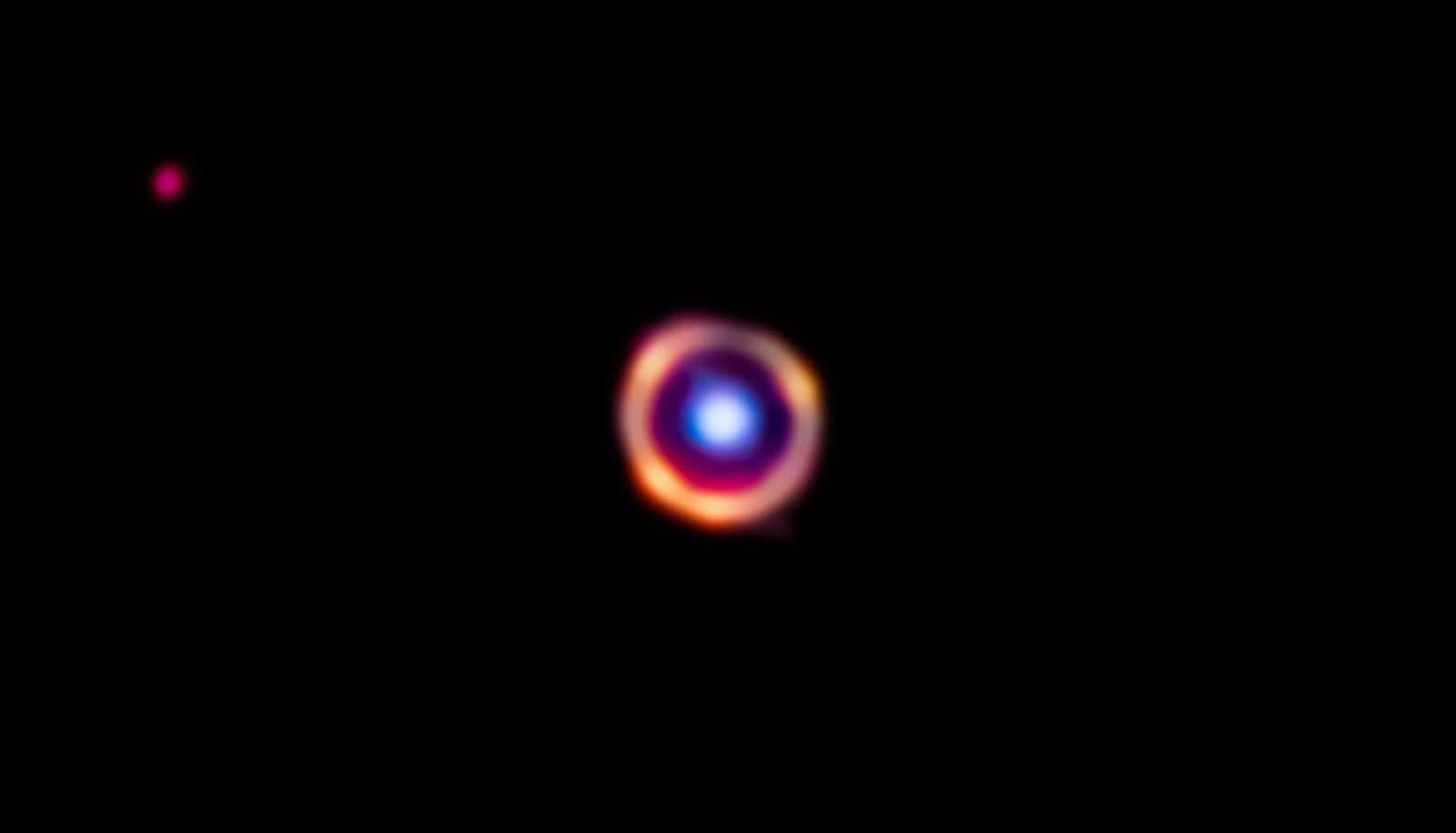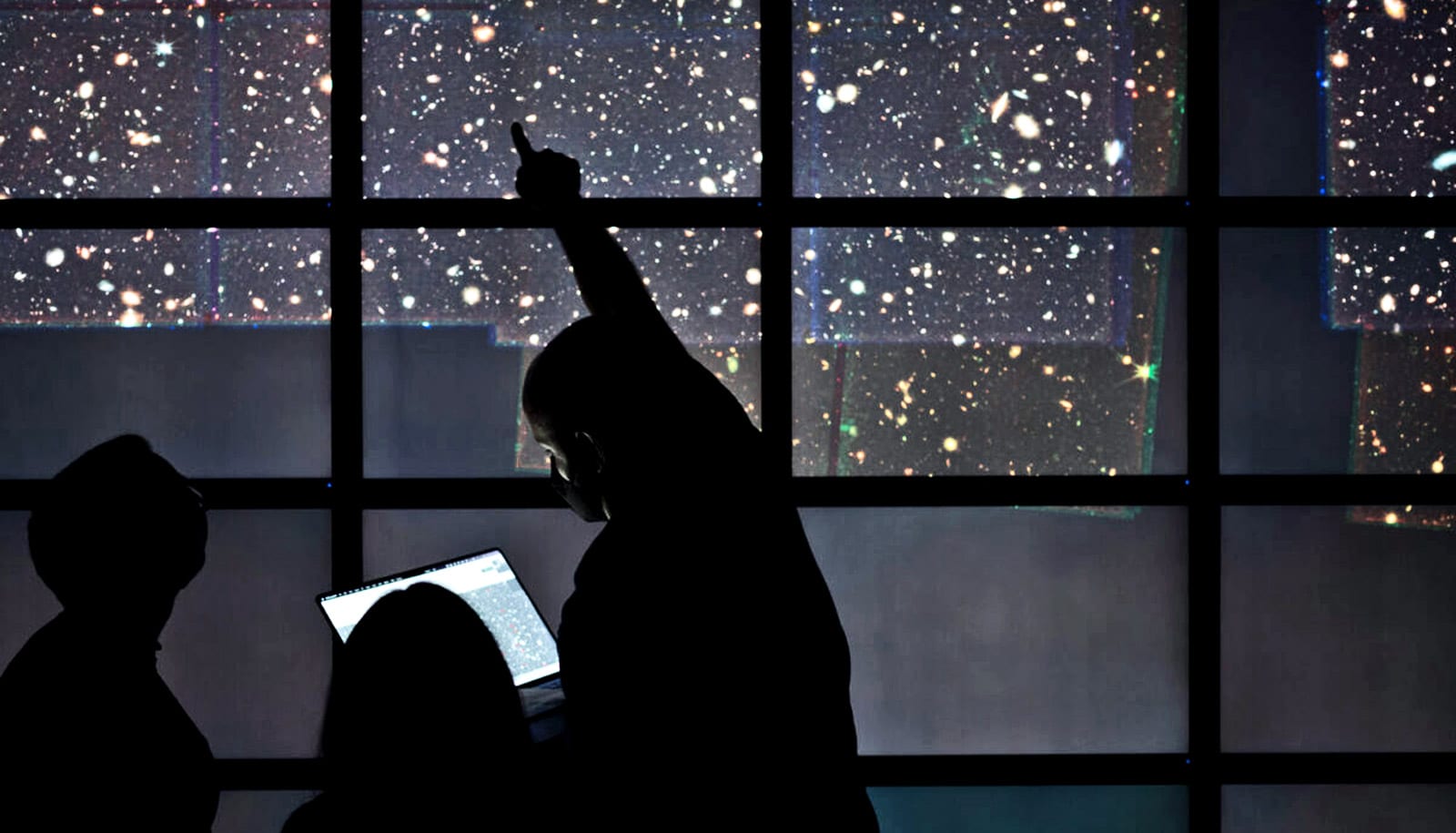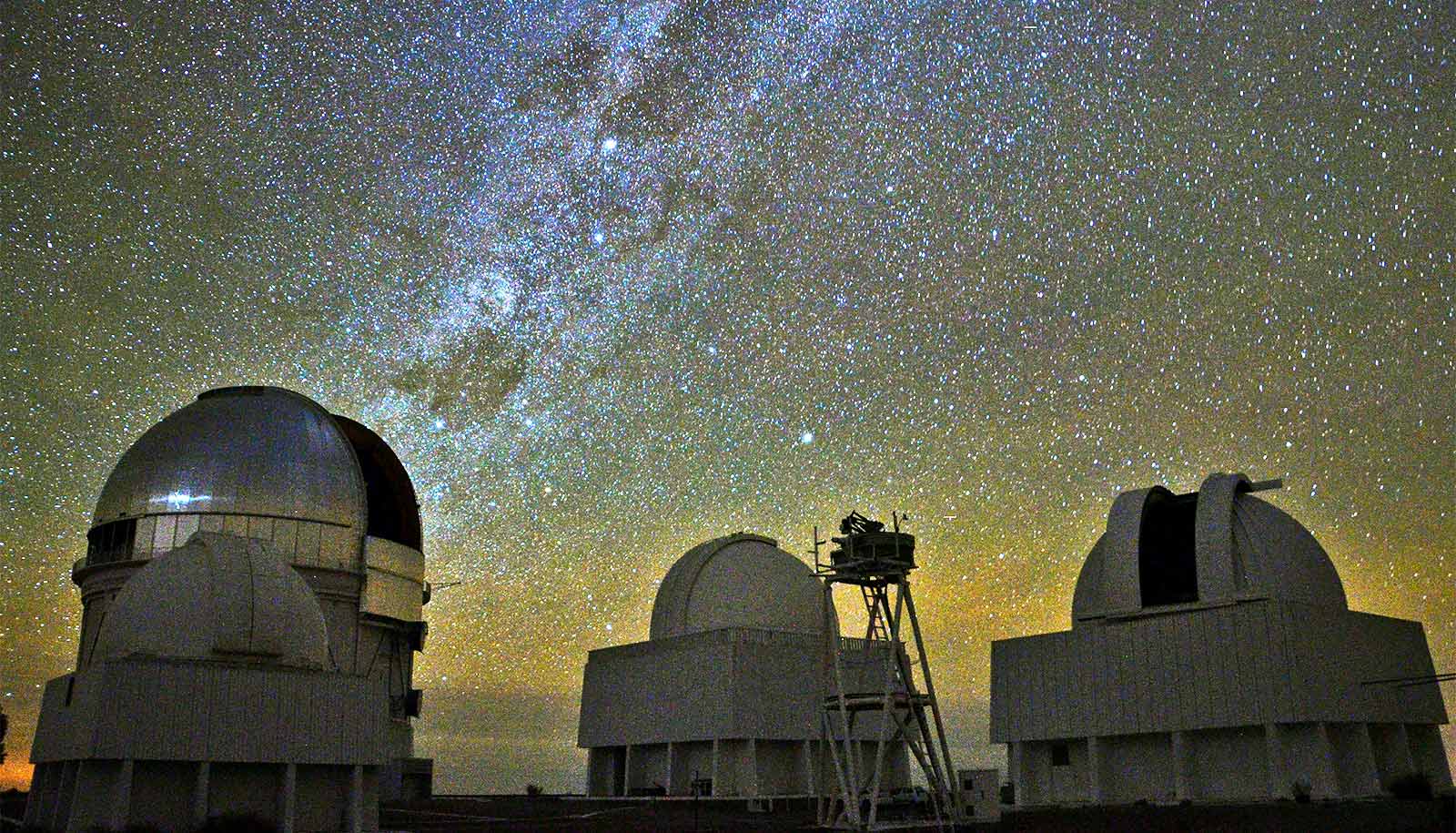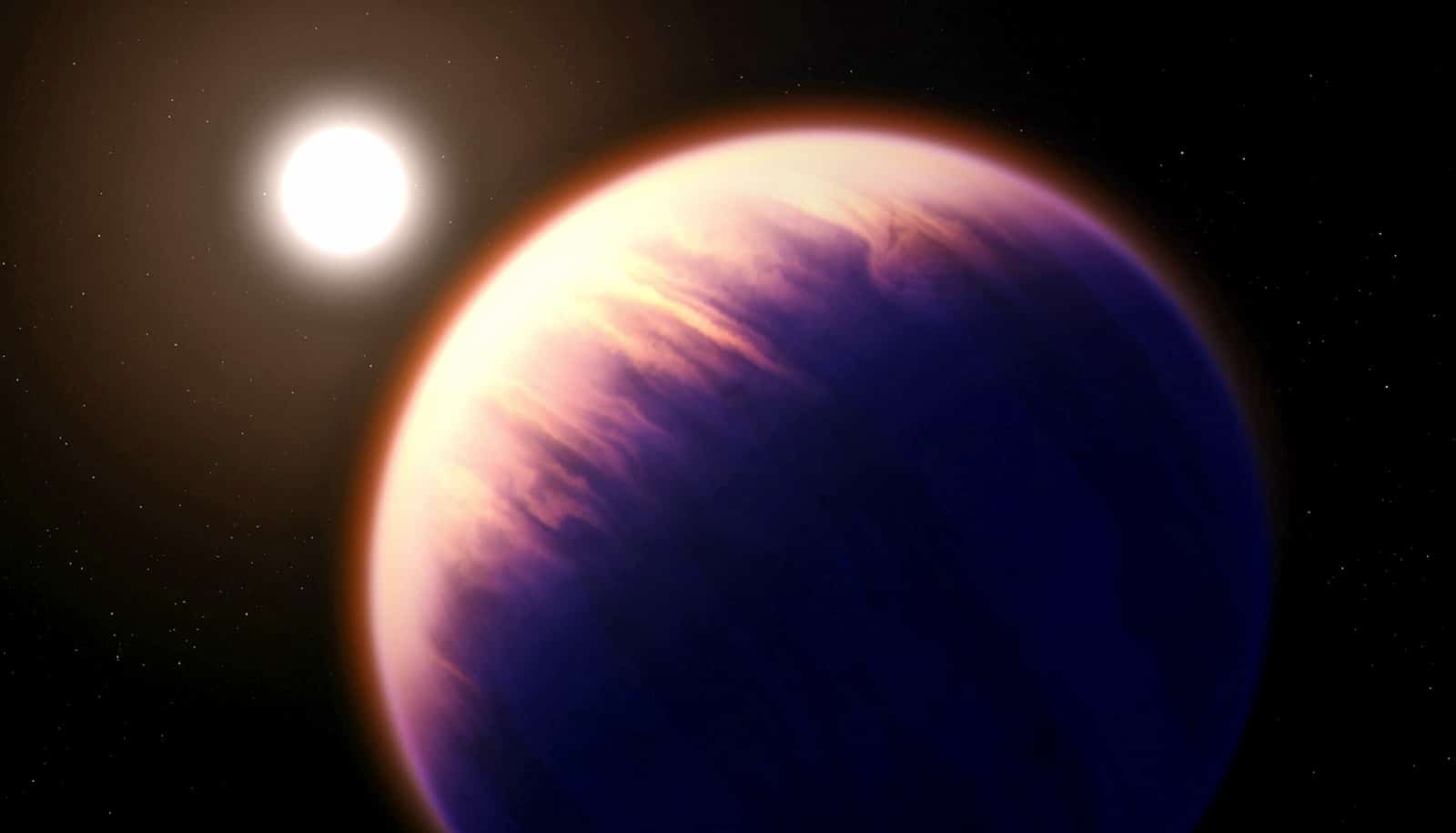Astronomers have detected complex organic molecules in a galaxy more than 12 billion light-years away from Earth.
The discovery of the organic molecules, which are familiar on Earth in smoke, soot, and smog, demonstrates the power of Webb to help understand the complex chemistry that goes hand-in-hand with the birth of new stars even in the earliest periods of the universe’s history.
At least for galaxies, the new findings cast doubt on the old adage that where there’s smoke, there’s fire.
Because of its extreme distance, the light detected the astronomers detected began its journey when the universe was less than 1.5 billion years old—about 10% of its current age. The National Science Foundation’s South Pole Telescope first discovered the galaxy in 2013 and it has since been studied by many observatories, including the radio telescope ALMA and the Hubble Space Telescope.
The discovery, reported this week in the journal Nature, was possible through the combined powers of the NASA’s Webb telescope and fate, with a little help from a phenomenon called gravitational lensing, says Justin Spilker, assistant professor in the physics and astronomy department at Texas A&M University.
Lensing, originally predicted by Albert Einstein’s theory of relativity, happens when two galaxies are almost perfectly aligned from our point of view on Earth. The light from the background galaxy is stretched and magnified by the foreground galaxy into a ring-like shape, known as an Einstein ring.
“By combining Webb’s amazing capabilities with a natural ‘cosmic magnifying glass,’ we were able to see even more detail than we otherwise could,” Spilker says. “That level of magnification is actually what made us interested in looking at this galaxy with Webb in the first place, because it really lets us see all the rich details of what makes up a galaxy in the early universe that we could never do otherwise.”
The data from Webb found the telltale signature of large organic molecules akin to smog and smoke—building blocks of the same cancer-causing hydrocarbon emissions on Earth that are key contributors to atmospheric pollution. However, Spilker says the implications of galactic smoke signals are much less disastrous for their cosmic ecosystems.
“These big molecules are actually pretty common in space,” Spilker explains. “Astronomers used to think they were a good sign that new stars were forming. Anywhere you saw these molecules, baby stars were also right there blazing away.”
The new results from Webb show that this idea might not exactly ring true in the early universe, according to Spilker.
“Thanks to the high-definition images from Webb, we found a lot of regions with smoke but no star formation, and others with new stars forming but no smoke,” Spilker says.
Astronomers are using Webb to make connections across the vastness of space with unprecedented potential, says Kedar Phadke, a graduate student at the University of Illinois Urbana-Champaign who led the technical development of the team’s Webb observations.
“Discoveries like this are precisely what Webb was built to do: understand the earliest stages of the universe in new and exciting ways,” Phadke says. “It’s amazing that we can identify molecules billions of light-years away that we’re familiar with here on Earth, even if they show up in ways we don’t like, like smog and smoke. It’s also a powerful statement about the amazing capabilities of Webb that we’ve never had before.”
The discovery is Webb’s first detection of complex molecules in the early universe—a milestone moment that Spilker sees as a beginning rather than an end.
“These are early days for the Webb Telescope, so astronomers are excited to see all the new things it can do for us,” Spilker says. “Detecting smoke in a galaxy early in the history of the universe? Webb makes this look easy.
“Now that we’ve shown this is possible for the first time, we’re looking forward to trying to understand whether it’s really true that where there’s smoke, there’s fire. Maybe we’ll even be able to find galaxies that are so young that complex molecules like these haven’t had time to form in the vacuum of space yet, so galaxies are all fire and no smoke. The only way to know for sure is to look at more galaxies, hopefully even further away than this one.”
JWST is operated by the Space Telescope Science Institute under the management of the Association of Universities for Research in Astronomy. The South Pole Telescope is supported by the National Science Foundation, the Department of Energy, and the United States Antarctic Program.
Source: Texas A&M University



